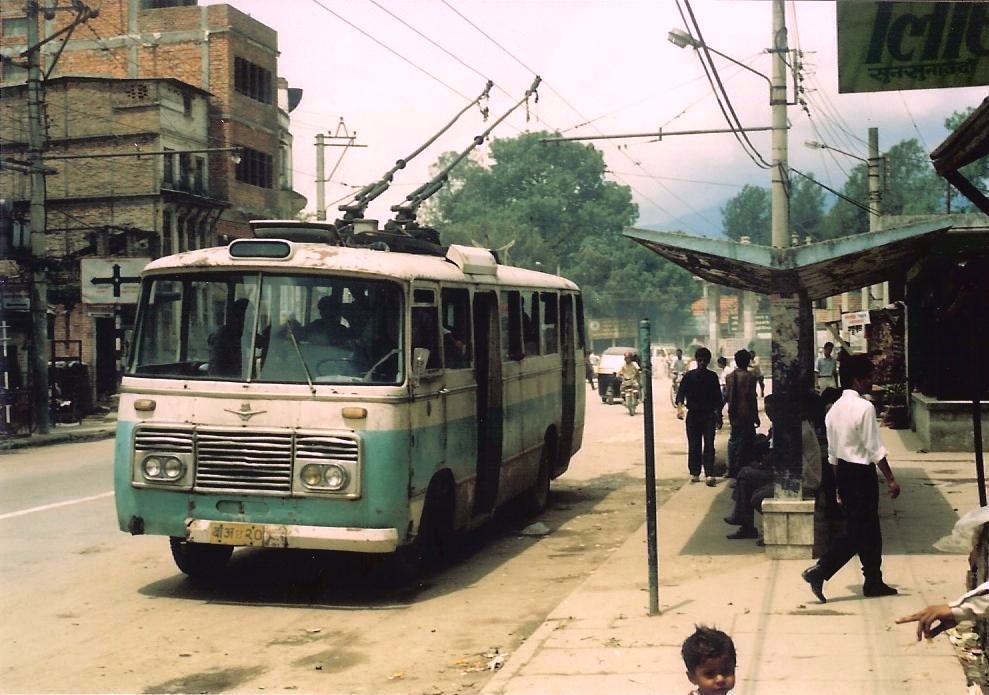On one fine Saturday morning in my early childhood days, my parents chose to embark on a delightful journey with me to the cultural gem that is Bhaktapur Durbar Square. The day held unparalleled excitement, not merely for the prospect of delving into Bhaktapur's rich history and culture, but also for the anticipated adventure of riding a trolley bus. In days of yore, these splendid vehicles gracefully traversed the route between Kathmandu and Bhaktapur. The indelible memory of our trolley bus journey, weaving through the lush paddy fields of Bhaktapur, remains vivid in my recollections. Inaugurated with foresight in 1975, the trolley bus system epitomized visionary utilization of Nepal's hydroelectric potential. Given the contemporary challenges of climate change and environmental stewardship, resurrecting this historic mode of transport presents an opportunity for a sustainable and cost-effective solution to meet the modern transportation needs of Nepal. The potential to reintegrate the trolley bus into the public transportation strategy is a beckoning prospect, offering Nepal the chance to inscribe a new chapter in its transportation history.
One of the primary technical advantages of trolley buses over battery-operated electric counterparts lies in their battery-less design. This not only yields a substantial reduction in the overall cost of the buses but also mitigates the need for importing expensive battery technology from international markets. The elimination of battery dependence offers a dual benefit to Nepal: significant fiscal savings and a positive environmental impact. The intricate process of battery disposal, replete with environmental complexities, underscores the inherent sustainability of trolley buses. For individuals and entities considering a transition to electric mobility, the issue of battery replacement emerges as a formidable technical challenge. In this technical landscape, the trolley bus stands out as a prudent and environmentally sound solution, providing a technically superior alternative for those navigating the intricate terrain of sustainable transportation.
Furthermore, Nepal's significant hydroelectric potential positions it favorably for a trolley bus revival. Trolley buses draw power directly from overhead wires, eliminating the need for batteries. Given Nepal's wealth of hydroelectric resources, this approach aligns seamlessly with the country's commitment to clean energy. The government, in collaboration with the Nepal Electricity Authority and the private sector, can invest in building power lines above roads and highways to create a comprehensive trolley bus network. This can create a huge demand of electricity inside our own country and replace environmentally toxic fossil fuels to run our vehicles.
Moreover, investing in the trolley bus system and its infrastructure presents a unique opportunity for Nepal's economy. With most resources already available within the country, this investment minimizes the outflow of money. The construction and maintenance of power lines and trolley bus infrastructure will create jobs, providing a boost to the local economy. Additionally, the increased demand for energy, driven by the trolley bus system, can enhance energy sales and contribute to economic growth.
Cities like Kathmandu, characterized by their smaller size compared to global metropolises, can capitalize on the advantages of a trolley bus system. The cost-effective construction of a trolley bus network in a smaller area, such as a 30 km line around the ring road, could serve as a model for sustainable urban transportation. This focused approach not only saves money but also addresses environmental concerns within a specific geographic area.
Advantages of Trolley Buses over Battery-Operated Electric Buses:
Continuous Power Supply: Trolleybuses have a continuous and reliable power supply as long as they are connected to the overhead wires. In contrast, battery-operated electric buses rely on batteries, which have limited capacity and need to be recharged periodically. Trolleybuses can operate without interruptions as long as they remain connected to the power source.
Reduced Battery Weight: Battery-operated electric buses require large and heavy batteries to store sufficient energy for extended operation. This added weight can impact the overall efficiency and performance of the bus. Trolleybuses do not carry heavy batteries, leading to potentially better energy efficiency and reduced weight, which can positively affect factors such as braking and overall handling.
Extended Range: Trolleybuses are not limited by the range constraints associated with batteries. As long as there is an overhead wire network, trolleybuses can operate continuously without the need for recharging. Battery-operated electric buses, on the other hand, need to stop and recharge, which can limit their range and operational efficiency.
Lower Maintenance Costs: Trolleybuses generally have simpler propulsion systems compared to battery-electric buses. The absence of a complex battery system and the associated maintenance requirements can contribute to lower maintenance costs for trolleybuses.
Lower Initial Costs: The infrastructure required for trolleybuses, such as overhead wires and power supply systems, may be less expensive to implement than building a widespread charging infrastructure for battery-operated buses. This could result in lower initial costs for implementing a trolleybus system in a city.
Energy Efficiency: Trolleybuses can be more energy-efficient compared to battery-operated buses, especially in situations where the power comes from a relatively clean and efficient source. Transmitting power directly from the grid to the bus can be more efficient than charging and discharging batteries, which incurs energy losses.
Conclusion
The strategic investment in a trolley bus system for Nepal embodies a technologically advanced, economically sound, and environmentally sustainable paradigm for public transportation. Drawing from historical antecedents, this initiative provides the government with a unique opportunity to engineer a state-of-the-art, efficient, and environmentally friendly transportation infrastructure. The envisioned trolley bus system seamlessly integrates with Nepal's prolific hydroelectric resources, offering a dynamic solution to the intricate challenges posed by climate change. This technical integration leverages advancements in power distribution and propulsion systems, aligning with the country's commitment to technological progress. Embracing the trolley bus system signifies not only a historical nod but a robust leap into a future where technological innovation converges with environmental consciousness to forge a resilient and sophisticated transportation network for Nepal.

